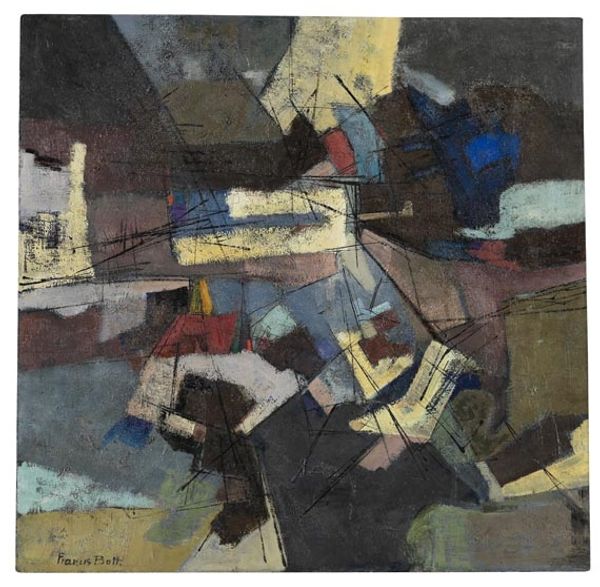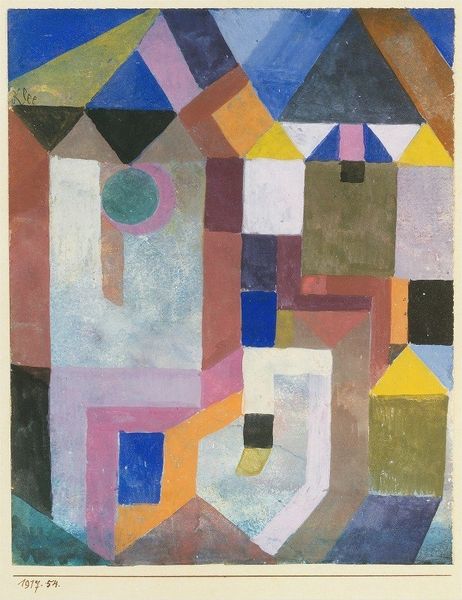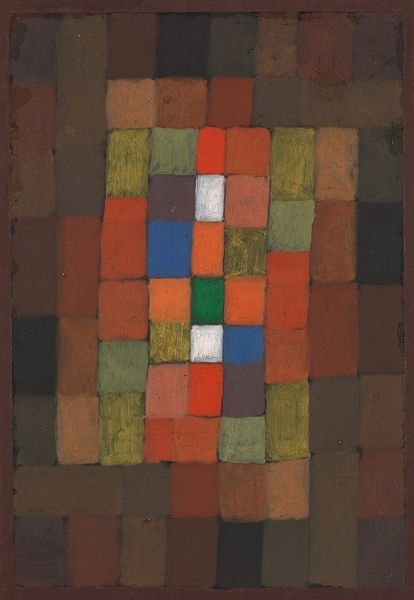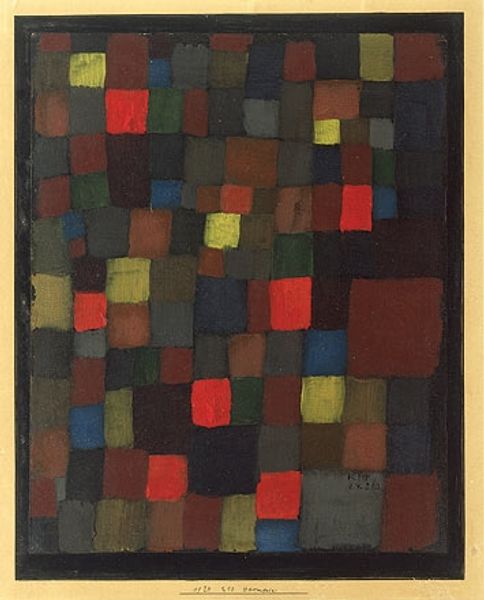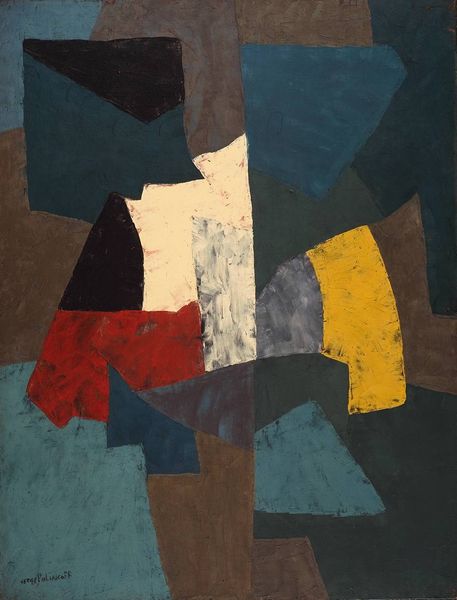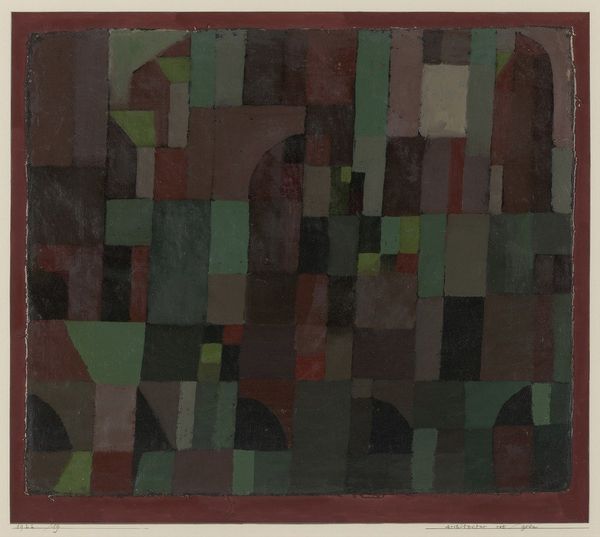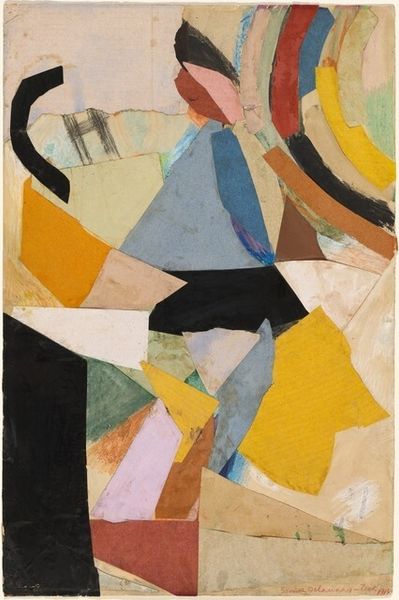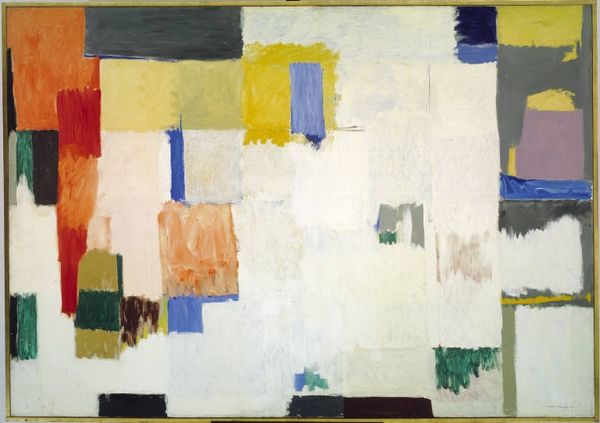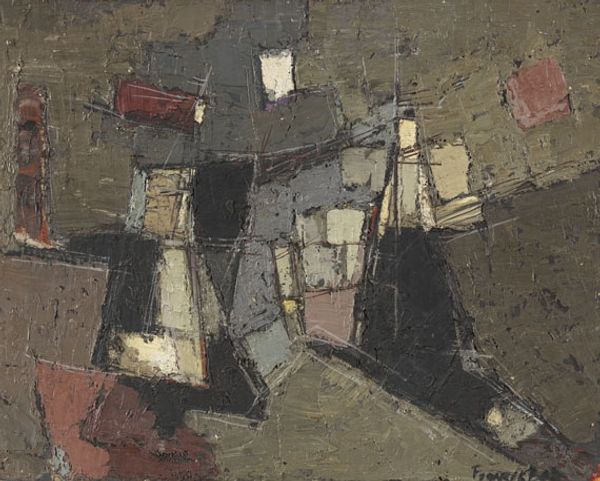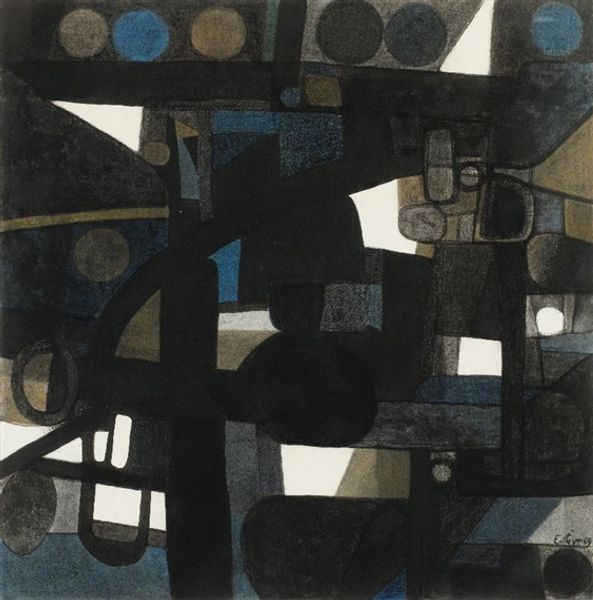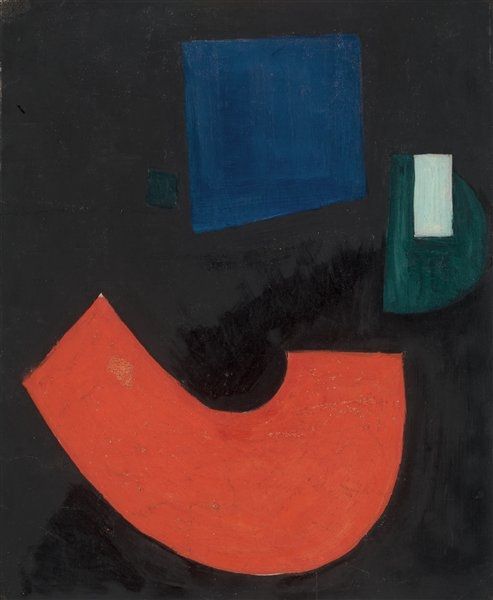
painting, oil-paint
#
abstract-expressionism
#
abstract painting
#
painting
#
oil-paint
#
painted
#
form
#
oil painting
#
abstraction
Copyright: Francis Bott,Fair Use
Editor: This abstract oil painting, titled "Composition" by Francis Bott, presents a compelling arrangement of layered forms. There's an almost architectural feel to it. What stands out to you in terms of the way this piece was made? Curator: It's crucial to examine the application of the oil paint. Notice how the artist uses layering and impasto to build texture, challenging the notion of painting as purely representational. Consider the materiality of the pigment itself. Where did Bott source his materials? What was the social context of the paint’s production and distribution? These considerations move beyond simple appreciation to a critical engagement with the means of production. Editor: That’s interesting! I hadn’t considered the sourcing of the paint. It makes me wonder about the choices Bott made in terms of colors and their availability at the time. Curator: Exactly! And what about the support? Is it canvas? What grade of linen was available to him and other artists during this period? These decisions, often overlooked, inform the final outcome just as much as Bott's artistic intention. Even the tools—the brushes, palette knives—leave traces of their labor. We see evidence of a hand, but more broadly, a complex network of manufacturing and distribution. Editor: So, you're saying we shouldn't just admire the final image, but also investigate the whole system that made it possible. Curator: Precisely. We can then analyze the painting's status as both art object and commodity. Editor: I see the painting in a completely different light now, realizing there's so much more to understand about the creation of art than just its aesthetic value. Curator: Indeed. Understanding the art requires the labor performed, and the social circumstances that surrounded it.
Comments
No comments
Be the first to comment and join the conversation on the ultimate creative platform.
